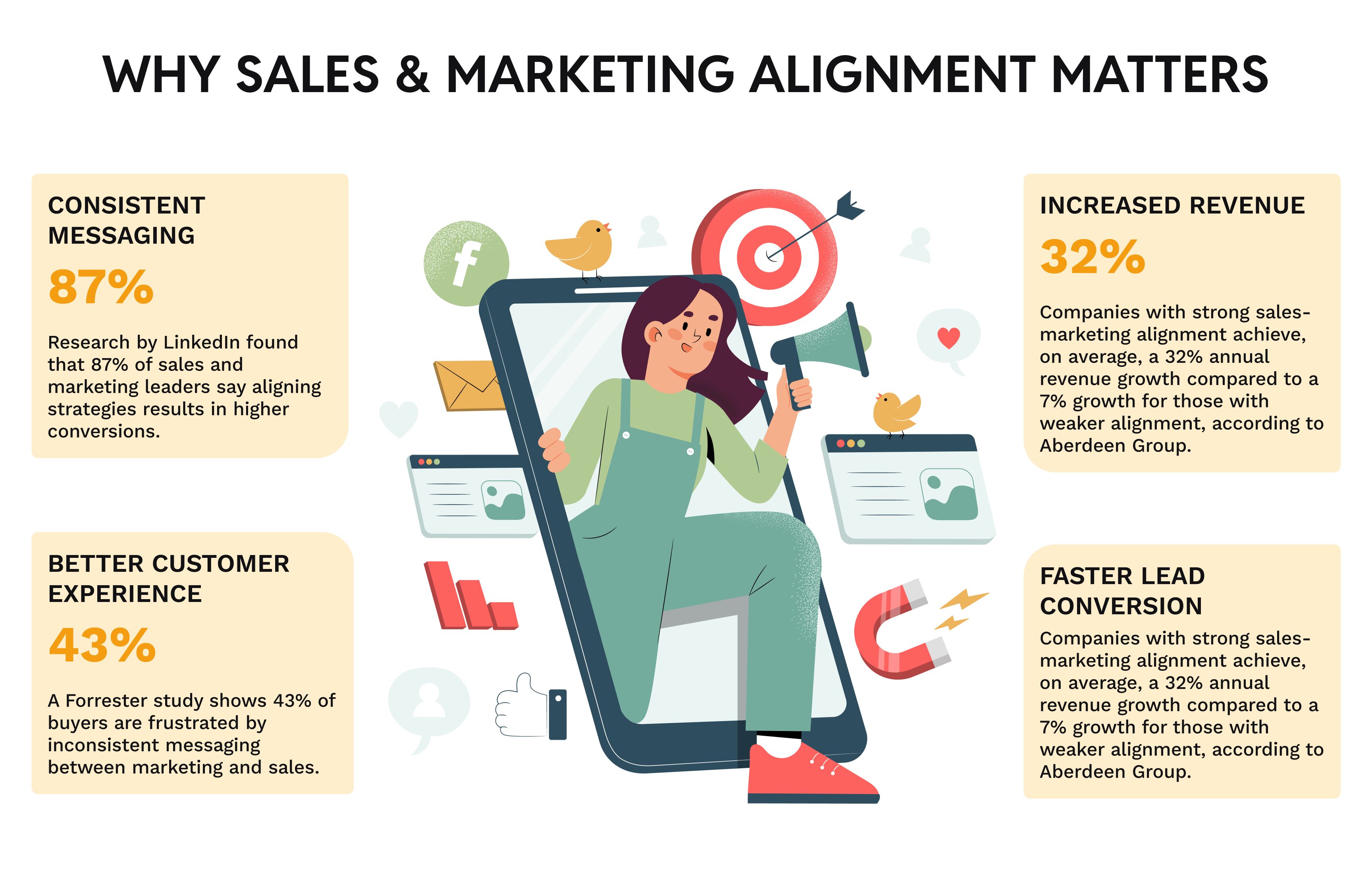In many organizations, sales and marketing teams operate like two planets in the same galaxy—related but rarely in sync. This lack of alignment can lead to lost revenue, inconsistent branding, and frustrated teams. According to a study by HubSpot, misalignment between sales and marketing costs businesses an estimated 10% or more of revenue per year¹. By bridging this gap, companies not only streamline the lead-to-customer journey but also foster a culture of collaboration that sets the stage for sustainable growth.
In this article, we’ll explore best practices for aligning strategies, sharing data, and collaborating across departments—and how XMC360 can empower organizations to transform leads into loyal customers


Why Sales & Marketing Alignment Matters

Consistent Messaging
When marketing and sales teams share insights, they can create unified messaging that resonates throughout the entire customer journey. Research by LinkedIn found that 87% of sales and marketing leaders say aligning strategies results in higher conversions².

Faster Lead Conversion
Aligned teams can nurture leads more effectively. Marketing generates qualified leads, while sales engages them with relevant pitches. This synergy shortens the sales cycle and boosts win rates.

Better Customer Experience
Prospective buyers prefer seamless transitions. If marketing sets certain expectations, sales should reinforce them. A Forrester study shows 43% of buyers are frustrated by inconsistent messaging between marketing and sales³.

Increased Revenue
Companies with strong sales-marketing alignment achieve, on average, a 32% annual revenue growth compared to a 7% growth for those with weaker alignment, according to Aberdeen Group⁴.
Best Practices to Align Sales & Marketing

Define a Unified Lead Qualification Process
Misalignment often stems from disagreements on what constitutes a “qualified lead.” By creating a standardized lead scoring system—based on metrics like engagement level, website activity, and demographic fit—both teams gain clarity on when a lead is sales-ready.
XMC360 Connection: With XMC360’s integrated CRM and analytics, marketing can track lead engagement while sales sees a lead’s entire interaction history. This central source of data helps both teams assess lead quality more accurately.

Share Data and Tools
Use a single platform or set of integrated tools to house lead data, campaign metrics, and customer feedback. This transparency eliminates guesswork, enabling both teams to spot opportunities and address challenges swiftly.
XMC360 Connection: XMC360 provides a unified dashboard that displays marketing campaign performance, lead scores, and real-time sales insights—bridging any information gaps that might hinder conversions.

Hold Regular Alignment Meetings
Weekly or bi-weekly “Smarketing” (sales + marketing) meetings keep both sides informed about new campaigns, lead flow, and pipeline status. Encourage open dialogue so everyone understands top priorities and can adjust their tactics.
XMC360 Connection: XMC360’s collaborative features let teams share updates, pull reports, and discuss campaign metrics all in one place—making alignment meetings more productive and data-driven.

Create Joint KPIs
Instead of siloed metrics, establish shared objectives that both teams can influence—like total new customers or revenue generated from marketing-qualified leads (MQLs). A Harvard Business Review study indicates that organizations with shared KPIs between sales and marketing see a 19% faster growth in revenue⁵.
XMC360 Connection: The XMC360 platform tracks end-to-end performance, from lead generation to closed deals, enabling both teams to see how their efforts contribute to collective goals.
Align Content and Messaging
Marketing content should support sales conversations. Provide the sales team with relevant case studies, whitepapers, and social proof that resonate with leads at different stages of the funnel. Sales feedback, in turn, refines marketing materials.
XMC360 Connection: XMC360 helps store and categorize marketing assets in a shared repository, so sales reps can easily access the most current, on-brand collateral for their pitches.
Turning Leads into Loyal Customers
Alignment isn’t just about closing deals; it’s about retaining and expanding customer relationships:
Onboarding and Follow-Up
Sales can hand off new clients to marketing for targeted onboarding campaigns or up-sell programs that maintain momentum after a purchase.
Feedback Loop
Marketing can gather customer satisfaction data and feed it back to sales. This helps identify potential upsell or cross-sell opportunities, as well as areas needing improvement.
Long-Term Advocacy
Aligned teams can work together on initiatives like referral programs, loyalty rewards, and personalized content that encourage existing customers to become brand advocates.
XMC360 plays a crucial role in this lifecycle management by providing a 360-degree view of the customer journey. From lead capture and sales nurturing to after-sales follow-up, businesses can unify touchpoints, maintain consistent messaging, and continuously improve based on real-time insights.

Bridging the gap between sales and marketing is no longer a luxury—it’s a must for businesses seeking to maximize their revenue and create memorable customer experiences. Organizations that successfully align strategies, share data, and foster open collaboration reap significant gains: higher conversions, faster sales cycles, and deeper customer loyalty.
At XMC360, we offer the integrated platform and analytics tools that can help break down departmental silos. By leveraging our solutions, businesses can ensure that marketing and sales work hand-in-hand to transform leads into loyal, long-term customers—fueling sustainable growth in the process.
References:
- HubSpot. (2021). State of Marketing Report.
- LinkedIn. (2020). State of Sales Report.
- Forrester. (2019). Bridging the Sales & Marketing Divide.
- Aberdeen Group. (2018). Sales & Marketing Alignment: The Key to Revenue Growth.
- Harvard Business Review. (2017). Shared Metrics for Organizational Success.


